Mint is a versatile and aromatic herb that can easily be grown in pots or containers at home. Whether you’re looking to enhance your cooking, make refreshing drinks, or just enjoy its delightful fragrance, mint is a great choice. It’s simple to grow, requires minimal effort, and thrives well in containers. This guide will show you how to grow mint successfully, step-by-step, ensuring you get the best results.
Why Grow Mint in Pots or Containers?
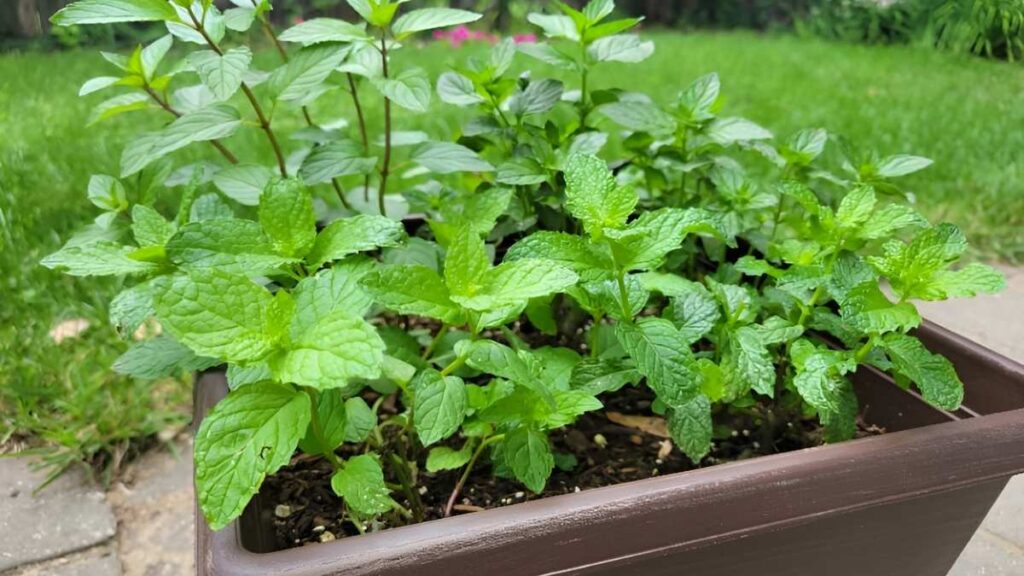
Mint can be invasive when planted directly in the garden, as it tends to spread quickly and may take over other plants. Growing mint in containers allows you to control its growth and keeps it from overtaking your garden beds. Pots or containers also provide better drainage, preventing mint from sitting in stagnant water, which can lead to root rot.
Choosing the Right Pot or Container
The first step to growing mint successfully is choosing the right container. Mint prefers a spacious pot with enough room for its roots to spread. Here’s what you should look for:
- Size: Select a container that is at least 10-12 inches wide and deep to allow room for growth.
- Drainage: Make sure the pot has drainage holes at the bottom to prevent waterlogging.
- Material: Clay, plastic, or ceramic pots are all suitable, but ensure the material allows proper airflow to the roots.
Selecting Mint Varieties
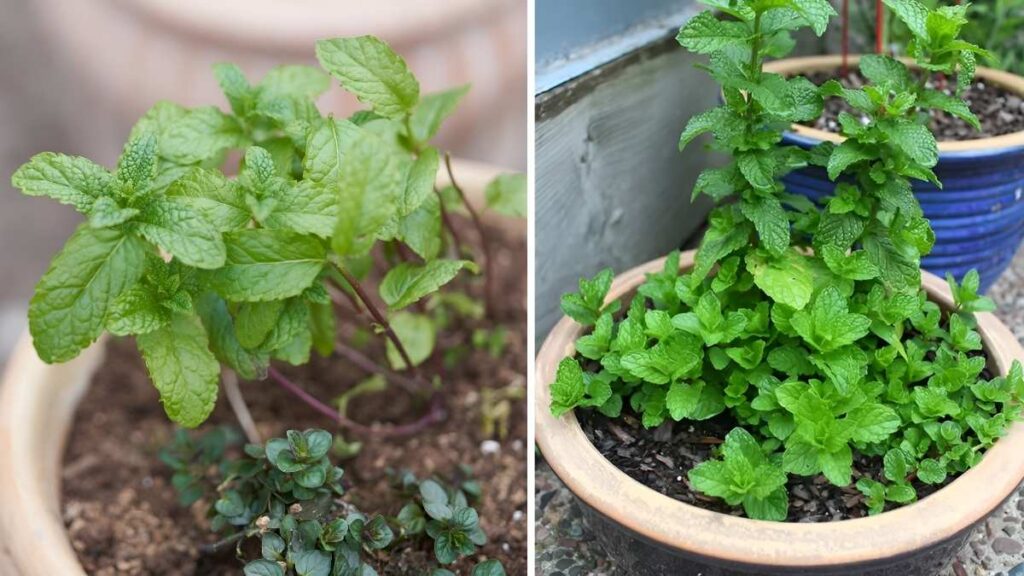
Mint comes in various varieties, each with its own unique flavor and aroma. Some popular options include:
- Peppermint: Known for its cool, strong flavor, often used in teas and desserts.
- Spearmint: Milder and sweeter, perfect for cocktails and salads.
- Chocolate Mint: A fragrant variety with a hint of chocolate, ideal for desserts.
- Apple Mint: A fruity, refreshing taste that pairs well with fruits and beverages.
Choose a variety that suits your culinary needs or experiment with different types to grow a small mint garden.
Preparing the Potting Mix
Mint prefers well-draining soil that retains moisture without becoming soggy. To create the ideal mix for growing mint, combine the following ingredients:
- Good quality potting soil: This will provide a base for the mint to grow in.
- Perlite or sand: These will improve drainage and prevent the soil from compacting.
- Compost: Adding organic compost will provide essential nutrients and improve soil structure.
Mix these components well, and ensure the soil is loose and airy, which will promote healthy root growth.
Planting Mint
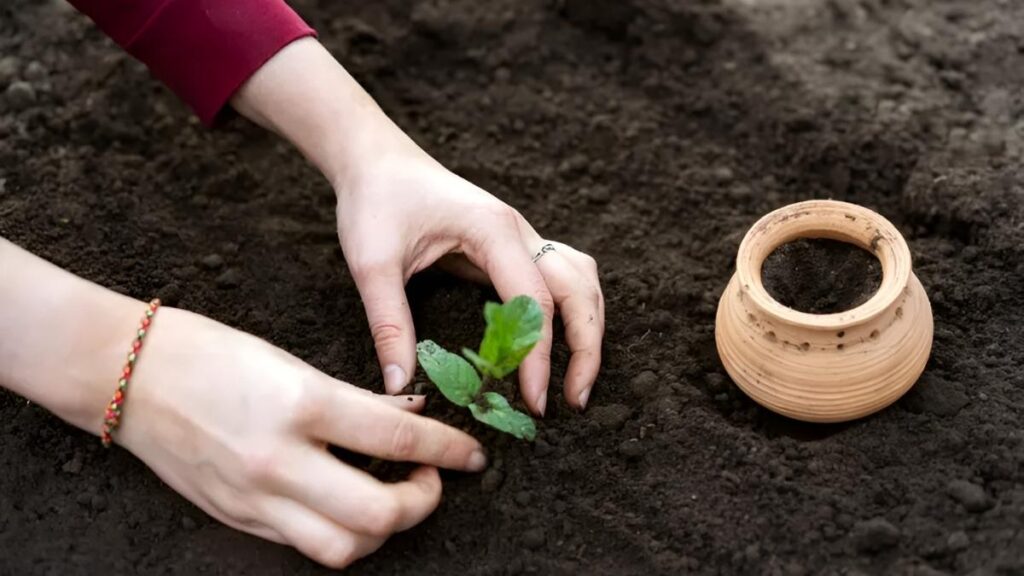
Mint can be grown from seeds, cuttings, or transplants. While seeds are an option, starting from cuttings or young plants is easier and faster. Here’s how to plant mint from cuttings:
- Choose Healthy Cuttings: Look for healthy mint stems, preferably ones that are around 4-6 inches long. Avoid stems that are flowering, as they tend to be less vigorous.
- Trim the Stems: Cut the mint stems just below a leaf node, where new roots can sprout.
- Prepare the Pot: Fill your container with the prepared potting mix, leaving about an inch of space at the top.
- Plant the Cuttings: Insert the cut ends of the stems into the soil, ensuring they are deep enough to stand upright. Space them a few inches apart to allow room for growth.
- Water Lightly: After planting, water the mint lightly to settle the soil around the roots.
Providing the Right Growing Conditions
Mint thrives in moderate sunlight and consistent moisture. Here are some important conditions to keep in mind:
- Sunlight: Place the pot in a location that receives 4-6 hours of indirect sunlight daily. Mint can tolerate partial shade, but it may not grow as vigorously in low light conditions.
- Temperature: Mint prefers cooler temperatures between 60°F and 70°F (15°C to 21°C). It can tolerate heat, but if the weather gets too hot, the plant may stop growing or become leggy.
- Watering: Mint loves moisture, but it doesn’t like to sit in water. Keep the soil consistently moist, but ensure the pot has proper drainage to avoid waterlogged roots.
- Humidity: Mint enjoys a humid environment, so if you live in a dry area, consider placing a tray of water near the plant to increase humidity.
Caring for Your Mint Plant
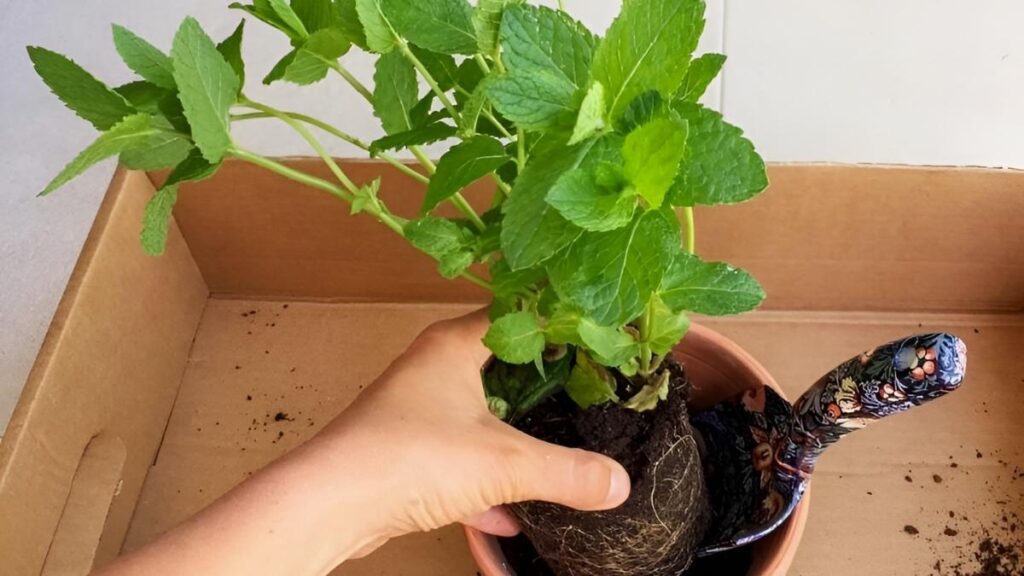
Once your mint is planted and settled in, it requires minimal care. However, following these simple tips will help ensure it grows healthy and strong:
- Pruning: Regularly trim the mint to encourage bushier growth. You can harvest leaves as needed by snipping off the top growth. Pruning also prevents the plant from becoming too leggy and helps maintain its shape.
- Fertilizing: Mint is a low-maintenance plant when it comes to fertilization. However, you can feed it with a balanced liquid fertilizer once a month during the growing season to encourage healthy growth.
- Repotting: Mint can outgrow its container over time. If you notice the roots starting to become crowded, it’s time to repot your mint into a larger container. This usually happens every 1-2 years.
Harvesting Mint
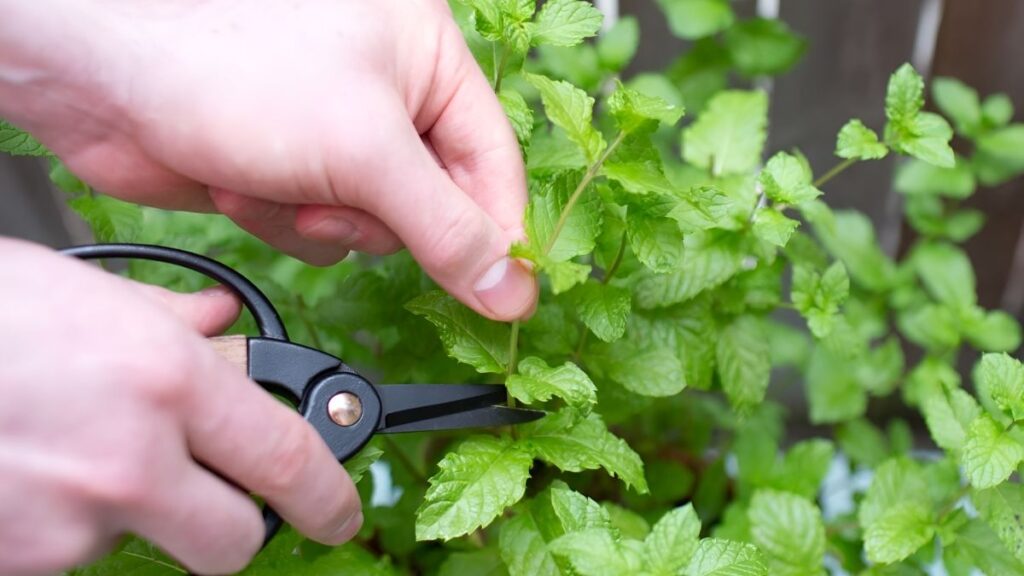
Harvesting mint is one of the most rewarding parts of growing it. The leaves are ready to be picked once the plant has grown a few inches tall. Here’s how to harvest mint:
- Pick the Leaves: Snip off the top few inches of stems to encourage fresh growth. Only remove a third of the plant at a time to avoid stressing it.
- Use Fresh or Dry: You can use the fresh leaves immediately in recipes, teas, or drinks. If you want to store mint for later use, tie the stems together and hang them upside down to dry.
Common Problems and Solutions
Mint is generally a hardy plant, but it can face some issues. Here are some common problems and how to address them:
- Pests: Mint can attract pests like aphids and spider mites. If you notice any, wash the leaves gently with water or use an insecticidal soap.
- Yellow Leaves: Yellowing leaves can indicate overwatering or poor drainage. Check the soil and ensure the pot has proper drainage.
- Leggy Growth: If your mint is growing tall and sparse, it may not be getting enough sunlight. Move it to a sunnier spot and prune regularly.
Conclusion
Growing mint in pots or containers is a simple and rewarding way to enjoy fresh mint all year round. With just a few basic steps, you can create a thriving mint plant that will provide you with aromatic leaves for a variety of uses. Whether you’re using it in cooking, making tea, or enjoying it in drinks, having fresh mint at your fingertips is both convenient and satisfying. Follow these tips, and you’ll be able to grow mint successfully in no time!




